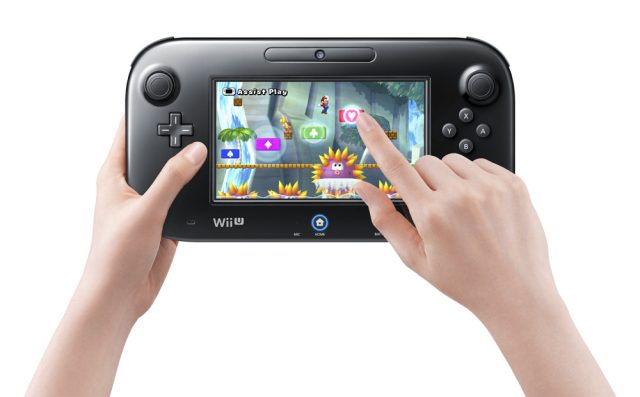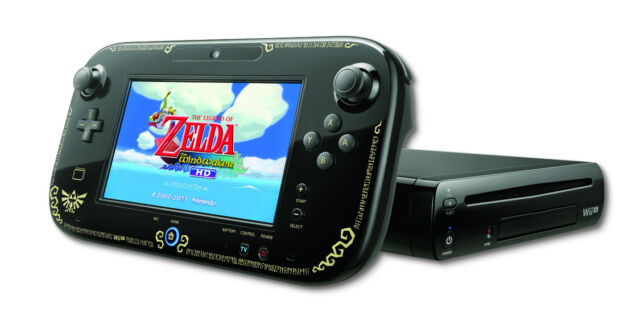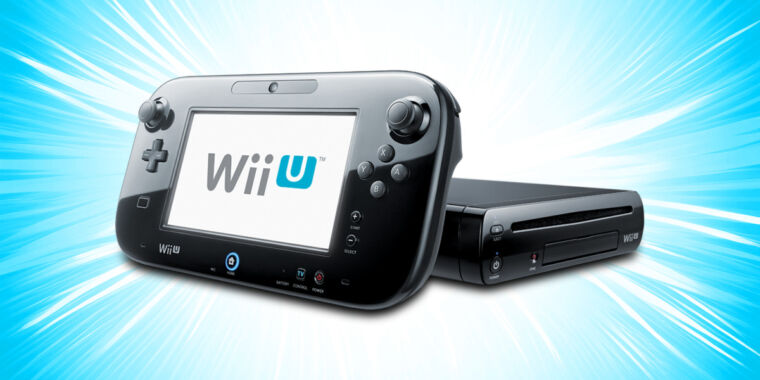Nintendo
Ten years ago today, Nintendo released the Wii U—an awkward but endearing console with a tablet-like game controller. Although it sold poorly compared to its smash-hit predecessor, Nintendo’s quirky game system still holds a place in our hearts. It’s a one-of-a-kind device that we may never see the likes of again.
The Wii U launched in the US on November 18, 2012. It initially shipped in a “Basic Set” for $299.99 and a “Deluxe Edition” for $349.99 that came with a copy of NintendoLand (more on that later). The console shipped in black or white color schemes with 8GB or 32GB memory versions. It was Nintendo’s first HD console.
Compared to the Nintendo Wii’s 101 million sales, the Wii U sold a mere 13.56 million units during its more than four-year lifespan (November 2012 to January 2017). And it moved far fewer units than the PlayStation 4 (100-plus million) and Xbox One (50 million). So many consider it a failure—but the “Big U” still kept a diehard following that endures.
The Wii U was never an easy elevator pitch: Imagine a home game console that has a main controller that is also a touchscreen, similar to a smaller, thicker, lower-resolution iPad. It’s like a tablet, but it isn’t—you still need a base console. And this tablet controller? You can only use one of them. But maybe two, eventually (although that never came to pass). Sometimes you use this controller screen as your main gaming display, sometimes you don’t. Beyond that, games can utilize up to five or more different types of control schemes, including Wii Remotes and a stylus on a touchscreen. Oh, and it’s a Wii in name, but it’s also an entirely new console—although it looks a lot like the last model and can use the same accessories and play Wii games.
The Wii U was an identity crisis in a box. But despite the confusion, the Wii U also allowed unique and enjoyable gaming experiences to emerge, even if they weren’t appreciated by a mainstream audience. We’re going to cover some of those notable quirks and features below.
The GamePad

Nintendo
The Wii U was the first home game console with a touchscreen game controller—the Wii U GamePad. It included a 6.2-inch touchscreen in the center, flanked by traditional analog sticks, buttons, and triggers. It also included a front-facing camera, stereo speakers, a microphone, a rumble motor, and a stylus. It even had an IR emitter on the top that allowed you to change channels and volume on your TV set (press the “TV” button) and two IR emitters on the face so you could play Wii games using a Wii Remote using only the GamePad. Nintendo packed a lot in there.
The GamePad could be used as a conventional controller, a primary display, or as a second screen that provided additional information such as maps and character status. In fact, one of the most interesting aspects of the Wii U is that it could offer asymmetrical gameplay on two screens (the GamePad and a TV), where each player had a different view of the same game.
Released in a world of iPads and iPhones, the Wii U gave the impression that Nintendo may have wanted to make a tablet console but wasn’t quite ready to put it all into one device. So the Wii U ended up as a strange hybrid—a tablet-like console that also needed a base station to work properly. Although, in reality, development doesn’t seem to have proceeded that way.
In service of its tablet controller, the console has the miraculous ability to wirelessly stream video from the console, up to 30 feet away, with very little lag. That felt like a technological marvel at the time. It allowed one of the Wii U’s most exciting features: Off TV Play, where you could just play a game on the GamePad without needing to use a TV set.
The ultimate Zelda console

Nintendo
Of any Nintendo console ever released, the Wii U had the most Zelda games available for it: 15, including two original titles (Breath of the Wild and Hyrule Warriors), two HD upgrades (Wind Waker HD and Twilight Princess HD), two Wii backward-compatible games (Skyward Sword and Link’s Crossbow Training), one NintendoLand mini-game (Battle Quest), and eight Virtual Console games (The Legend of Zelda, Zelda II, A Link to the Past, Ocarina of Time, Majora’s Mask, The Minish Cap, Phantom Hourglass, and Spirit Tracks).
The Nintendo 3DS also played host to numerous Zelda titles, but if you were a home console Zelda fan in the golden age of the Wii U, there was no better place to be.

